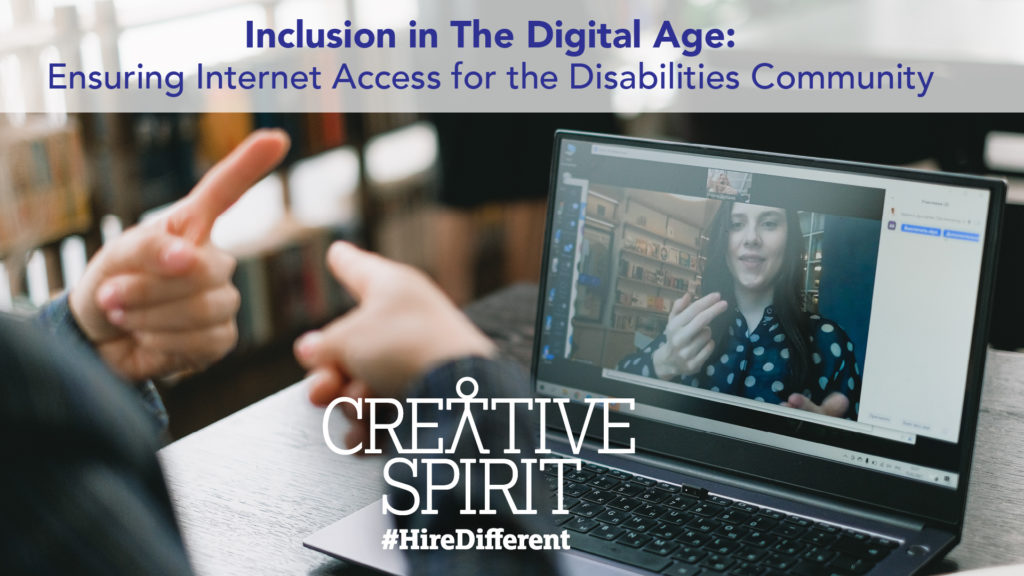BY Menachem Rephun – Creative Spirit Communications Manager, Self-Advocate

The Digital Age
In our digital age, full internet access is vital for countless aspects of daily life, especially job searching and employment. The vast majority of employment resources are now online, and most jobs require at least some computer usage and internet access. Creative Spirit’s goal is to ensure fair-wage employment for people with disabilities, and that means guaranteeing equal access to online employment resources and job opportunities, in addition to full digital access. That’s why we’re so troubled by data showing that a vast portion of the disabilities community has almost no internet access. Not only does this worsen the unemployment crisis, it marginalizes the disabled community into what Issues.org writers Jonathan Lazar and Paul Jaeger call “second-class citizens of the information society.” And that’s not all. In 2016, a Pew Research Survey found that adults with disabilities are 20% less likely than non-disabled adults to say they subscribe to home broadband or own a computer or smartphone. The survey also found that 23% of respondents with disabilities said they never go online, compared with 8% of respondents without disabilities. Slate has suggested the disturbing possibility that “fewer disabled people have internet access than neurotypical people because they are more than twice as likely to live in poverty.” The bottom line is that for people with disabilities, restricted internet access isn’t just an inconvenience. It can actually be harmful academically, socially, professionally, and during the Covid-19 pandemic, medically. In light of all this, the question is clear: what can we do to improve online accessibility for people with disabilities?
The Causes of Digital Inaccessibility
When exploring the source of digital inaccessibility, the truth is that the causes vary depending on the disability. Visually challenged users might be held back by the incompatibility of web content with their screen readers. People with speech and communication impairments might be excluded from online chats and conferences, while those with intellectual and developmental disabilities might find themselves unable to use a site due to issues with design, layout, and overall navigability. Lazar and Jaeger, the authors cited earlier, believe the Internet itself is inherently unfriendly in design towards people with disabilities. On an even more concerning note, the authors point out that designers and web software developers often deliberately take advantage of policy loopholes so that people with disabilities are inconvenienced at best, and have their basic needs outright ignored at worst and not fighting for Inclusion in The Digital Age.
Basic design changes can dramatically improve internet accessibility for people with disabilities, though the problem is also connected to deeper societal biases and a lack of basic understanding. People with disabilities currently make up the largest minority group in the United States (54.4 million Americans, or 18.7% of the population), and there’s absolutely no reason they should be denied a resource as vital as the internet. Given the incredible speed at which technology is advancing, a fully inclusive and accessible internet is something that can definitely be achieved. At the same time, a cultural shift also needs to take place.
Digital Disability Rights and a Culture of Accessibility: Inclusion in The Digital Age
Achieving internet inclusion for people with disabilities depends not only on making the internet more user-friendly, but on creating a culture of accessibility. In an article for Disability Rights Education and Defense Fund, authors Daniel Goldstein and Gregory Care discuss what they call “digital disability rights,” which includes laws like the Twenty-First Century Communications and Video Accessibility Act that focuses on making technology accessible to people with disabilities. They note that the Justice Department interprets the Americans with Disabilities Act (ADA) to require consideration of new technology, and that the onus is on high-level leaders to prioritize digital accessibility and ensure that accessibility is permanent. “Part of what has allowed companies like IBM to be exemplars in the realm of accessibility is the instillation of a culture of accessibility,” the authors write. “In 1999, IBM instituted Corporate Instruction 162, which mandated that the company assess the accessibility of all new products before release and integrated accessibility into the design process. Without that culture and commitment by leadership, even a well-designed accessibility plan will become a dead letter and any gains in accessibility will be lost. And that lost opportunity helps no one.” In short, the onus is ultimately on business leaders to ensure that digital accessibility can be permanently sustained. Lazar and Jaeger assert that “evaluating compliance, improving enforcement, and increasing the availability of information about compliance are all necessary to promote and improve Web accessibility.”
Positive Steps Forward, and How Creative Spirit Can Help Inclusion in The Digital Age
Now that we’ve explored some of the causes behind internet inaccessibility as well as possible solutions, it’s important to acknowledge the enormous potential of the internet to substantially benefit the disabilities community in countless ways, including helping them connect socially with those who share similar interests and experiences, and allowing them to work or take classes remotely. “Beyond the clear potential socialization and communication benefits, the Internet offers an enormous array of new ways to pursue education and employment,” Lazar and Jaeger write. “These potential benefits might be the greatest benefits in the long term for promoting social inclusion of persons with disabilities, given that the current levels of employment and education for persons with disabilities are catastrophically low as compared with the rest of the population.” They also note an encouraging trend in the federal government’s renewed focus on enhancing accessibility. In 2010, the Department of Justice began pursuing revisions to the ADA to cover changes in technology since its passage, including website accessibility. In June of that year, the Departments of Justice and Education issued a joint statement affirming that the use of inaccessible e-book readers in elementary, secondary, and post-secondary schools constituted a violation of the ADA. According to a recent Slate article, former Rep. Tony Coelho, one of the original main sponsors of the ADA who lives with epilepsy, suggests that leaders prioritize digital accessibility and “build relationships with disability leaders in their communities. They are your best assets.”
Creative Spirit believes in developing partnerships and relationships with business leaders, to help them recognize the importance of digital accessibility for employees with disabilities, and how greater accessibility translates to business success. More than 30 years after the passage of the ADA, it’s time to expand the disability rights conversation to include digital disability rights, and to recognize that there can be no true inclusion without digital accessibility and an internet re-designed to take the millions of users with disabilities into consideration.






